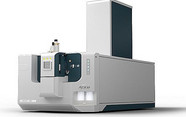Comparing the rheology and particle size of smoothies made with different blenders

contributed by Malvern Panalytical |
In the Oxford English dictionary a smoothie is defined as ‘a smooth, thick drink made with puréed fresh fruit and yogurt, ice cream, or milk’.
Abstract
Two smoothie makers have been evaluated and compared by measuring the particle (fiber) size and viscosity of two different smoothies recipes to see which smoothie maker gave the smoothest blend.
Introduction
Smoothies have been around for the best part of a century although it was not until the development, commercialization and evolution of the blender between 1920 and 1950 that home-made smoothies (in the modern sense) became possible. Their popularity was further accelerated by the health food movement of the 1960’s and more recently the commercialization of dedicated smoothie makers, combined with a trend towards natural and nutritious foods [1].
In the Oxford English dictionary a smoothie is defined as ‘a smooth, thick drink made with puréed fresh fruit and yogurt, ice cream, or milk’. However, there does not seem to be any fixed rules to what should go in to a smoothie with common additions being vegetables, crushed ice, nuts, seeds and extra juice or water.
Log in or register to read this article in full and gain access to The Analytical Scientist’s entire content archive. It’s FREE!

















